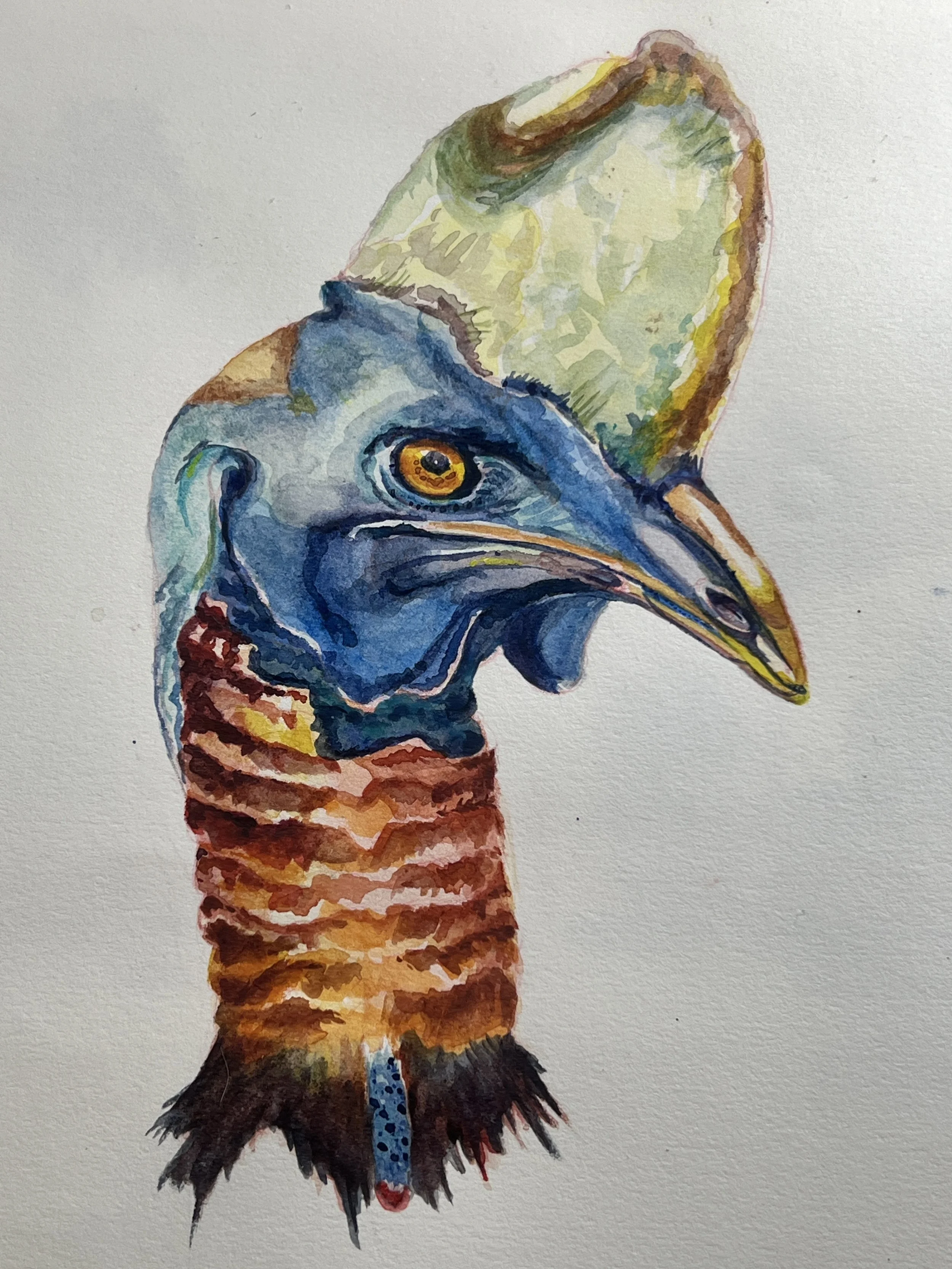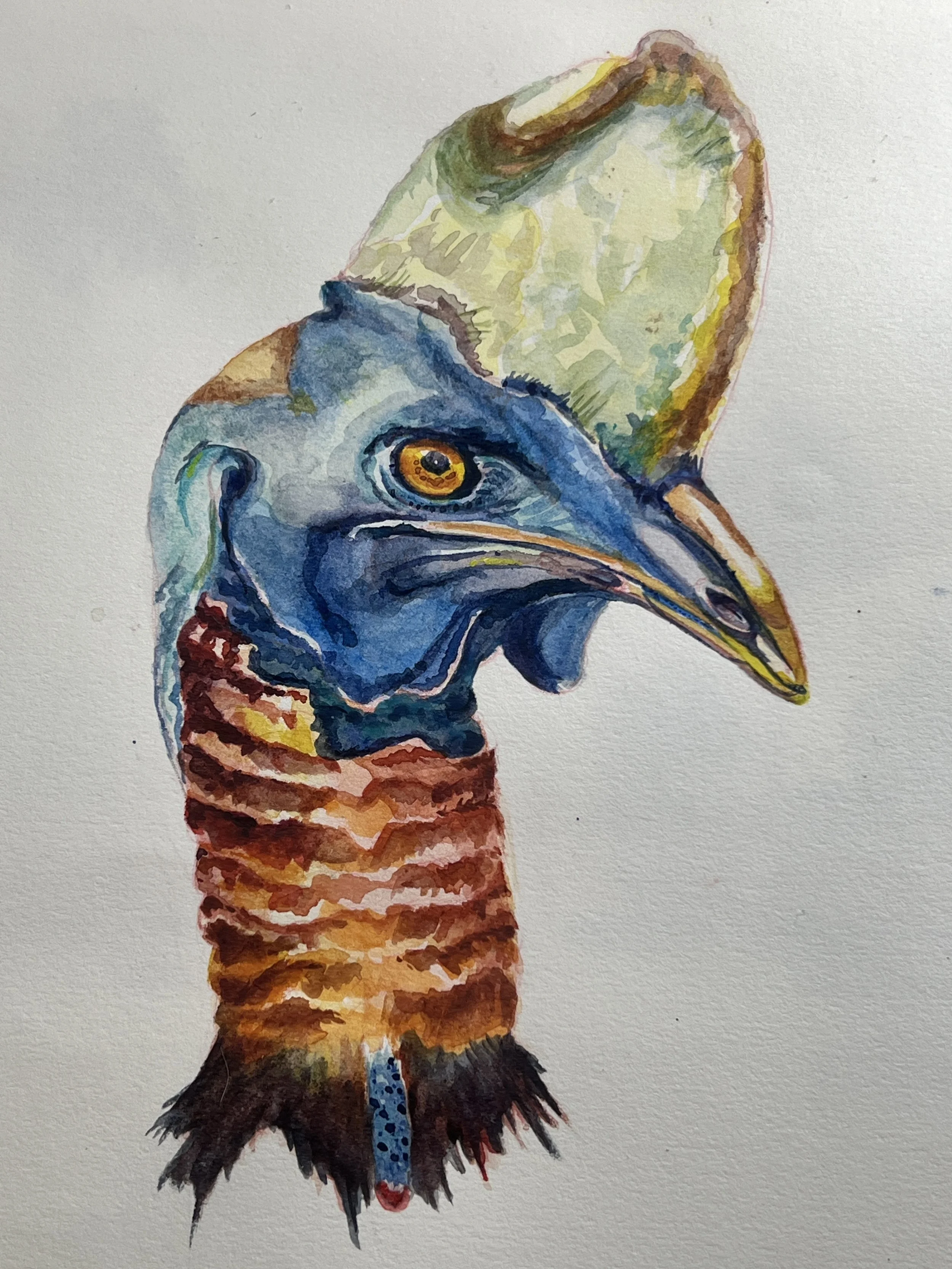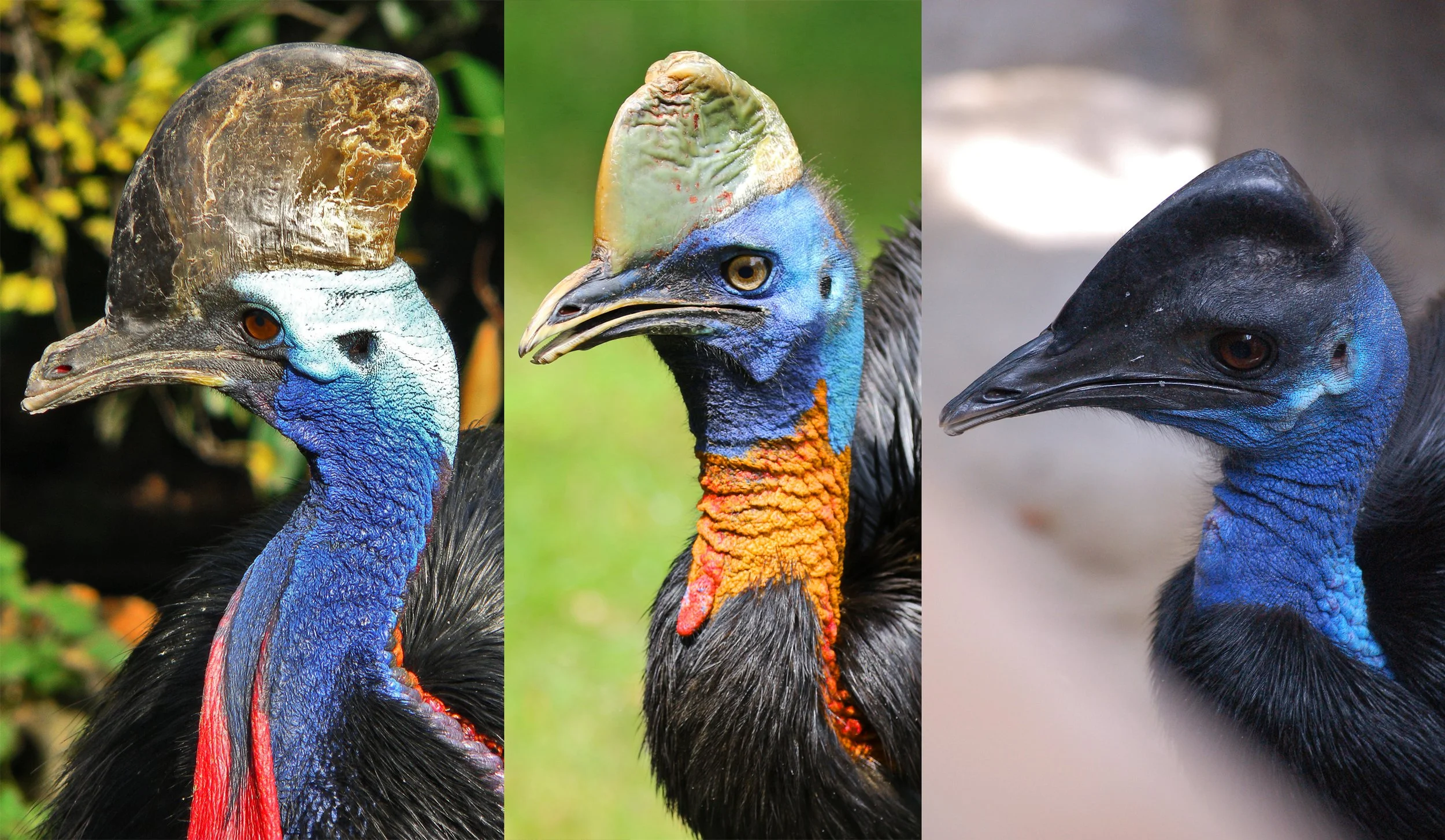Call of the Cassowary
A year ago this month, I took an unexpected poetry writing workshop from author Amiee Nezhukumatathil, an award-winning poet and professor of English at the University of Mississippi.
It was a streaming class in conjunction with a nature journaling conference, and I could hardly believe my eyes when they introduced this woman, who, as you might already know, wrote World of Wonders, a collection of essays that intertwine her observations of plants and animals with personal reflections on identity, belonging and wonder.
Her book had been on my TBR for half a year. I’d purchased it at my favorite bookshop, Warwick’s Books in La Jolla, California. I quickly retrieved my personal copy, settled into her course and dreamed of finally reading her book.
And read it, I did.
This post is not about said workshop, though it was kind and creative and inspiring. Thank you, Amiee!
Aime’s book introduced me to creatures I had never known—like the Bonnet Macaque, the wide-eyed Potoo and the mysterious Vampire Squid. Yet the one that stopped me in my tracks was the Southern Cassowary, a towering, flightless bird most closely kin to the emu.
Though I watercolored the Northern Cassowary, what lingers with me are the stories of this little-known trio of birds—often called The Living Dinosaurs. Their presence feels like a reminder of how much wonder still walks among us, if only we pause long enough to notice.
Three species within the bird genus Casuarius (the cassowary). Featuring from left to right: southern cassowary, northern cassowary and dwarf cassowary! #cool
Cassowaries are from the rainforests of New Guinea and Australia
They weigh 130lbs and run 30mph through the thick forest
Leaps 7ft into the air to attack with it’s scaly feet 5-inch razor sharp claws
Dons a casques, a helmet-like structure atop the head
Mostly a frugivore - eats fallen fruits from the forest floor
Keystone Species - because they swallow fruit seeds whole and deposit them in their poop - often in new locations - they disperse seeds around the rainforest and promote plant biodiversity.
The San Diego Zoo storytells this bird to life. Read about them here.
The Call of the Cassowary
The southern and dwarf cassowaries call in a voice so low, it slips beneath the range of human hearing. Their calls rumble through the forest floor, not into your ears but into your very bones—a boom you feel more than you hear. A mysterious presence without a glimpse.
And here’s the twist: cassowaries don’t just boom. They hiss. They whistle. They even clap their bills. They make strange, almost otherworldly sounds. They make you question your neat, well appointed life in a world far away from the dewy rainforests of New Guinea.
It makes you wonder—just as the cassowary has its own hidden voice, so too does each of us. What is the call you’re meant to hear, the one that stirs you to listen, to follow, to become?
These questions have been on my mind for the better part of a year. Stay tuned for the answers. Xx










